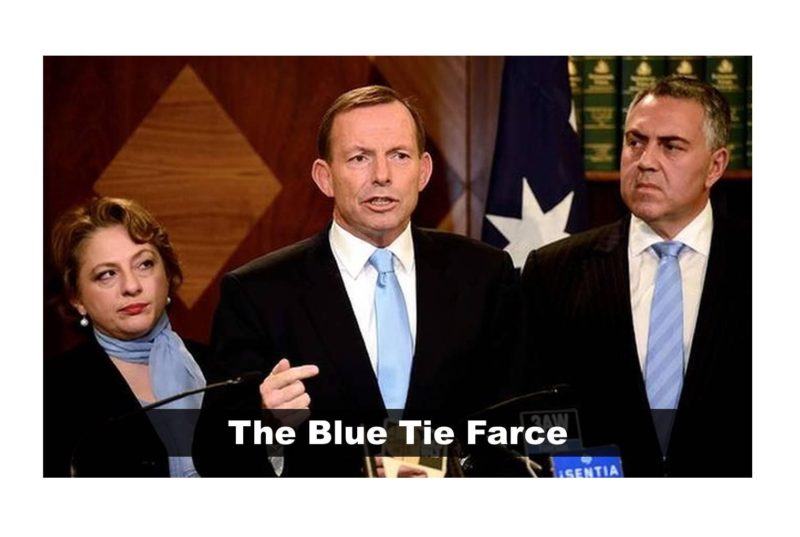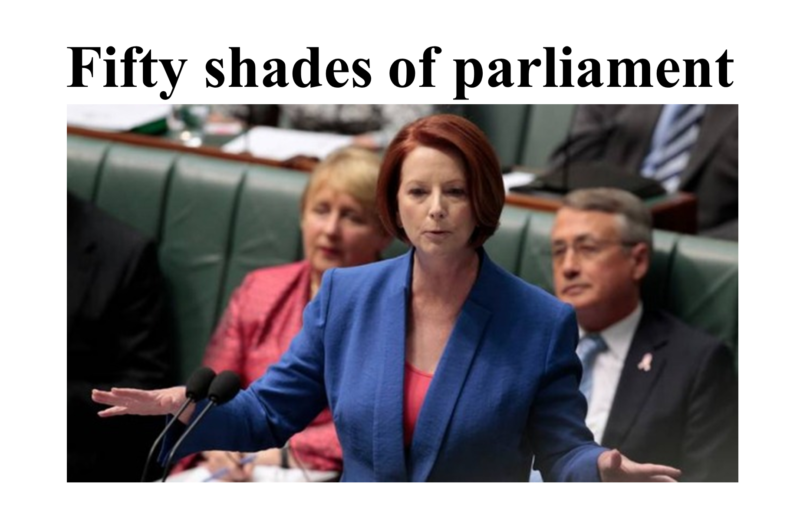
Colour in Politics and blue ties in particular became a hot topic in Australian politics from 2010 to 2015. During this period, I was often asked to provide comment by journalists writing about this riveting issue, especially Jenna Clarke who writes for the Sydney Morning Herald/The Age.
At the time, Australian Leader of the Opposition and then Prime Minister Tony Abbott and his Liberal ministers appeared to colour code their neckties. A student boxer, Tony Abbott won two Blues for boxing while at Oxford University. It is possible that this influenced his decision to almost inevitably wear blue ties and this practice was also adopted by many of his Liberal colleagues.
Colour coding is effective in branding and corporate strategy as it helps to present a cohesive visual image. However, the practice has drawbacks in politics. Some may consider this practice to help convey a sense of cohesion as well as dependability and reliability. However, colour coding can also convey a lack of individualism and creativity as well as a blind ‘follow-the-leader’ style flock mentality.

Jenna Clarke’s article ‘Fifty Shades of Parliament’ examined the way colour conveyed non-verbal messages about politicians. In my input to the the article, I suggested that strong, saturated colours helped to convey a sense of strength of character, resolve, courage and confidence. However, I also mentioned that colour symbolism is learned rather than hard-wired. While it can be quite effective in certain contexts, it’s use needs to be carefully monitored. Clarke’s article was published in the Sydney Morning Herald and Canberra Times on 12 October 2012. You can read the full article on the SMH website.
Jenna Clarke wrote a follow-up article that focussed on the trend for blue ties ‘My wife chose it: The little white lie about a politician’s blue tie’. In this article, I noted that while colour psychology may be branded by some as “trivial”, Napoleon did it, Obama does it and now, it seems, every prominent politician in Australia is incorporating colour branding into their political arsenal – coincidentally or not. “While the use of colour linked to political parties is not new, such as the use of orange by protestant groups in Ireland and the various coloured shirt protesters in Thailand, it seems to me that the linking of red with Labor and blue with Liberals also sets up, for the moment, a red for girls, blue for boys association, which may be considered by some as a little bit childish.” This was at a time when Opposition Leader was Julia Gillard and it is not clear if Abbott set up the blue tie strategy for this purpose. The article was published in the Sydney Morning Herald on 13 June 2013 and you can read the full article here.
Respected author Anne Summers published ‘Women should beware Abbott’s blue tie brigade’ on 13 June 2013 in The Age. The ‘blue tie brigade’ came to represent a somewhat misogynistic approach to women and women’s issues. Summers commented that the number of women in Parliament was likely to fall by halve if Tony Abbott became Prime Minister. You can read the full article here.
In time, Tony Abbott’s blue ties came to be symbolic of more rather negative than positive traits. Paul Toohey noted these in his article ‘Prime Minister Tony Abbott’s blue tie was a symbol of his inflexibility’. This article was published in the Herald Sun on 21 September 2015 and you can read the full article here.
Jenna Clarke published an article on politicians and colour ‘Well suited: Memorable moments on the hustings’. This article, published in the Sydney Morning Herald on 25 June 2016, focussed on the most noteworthy looks of the 2016 Federal Election campaign. Whilst I provided a fair amount of colour insight, my comments about red and its attentional advantage was quoted in relation to Minister for Women Michaelia Cash’s nail varnish. You can read the full article here.